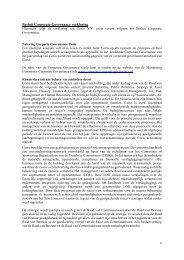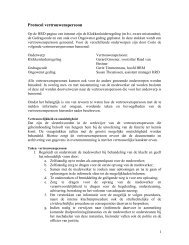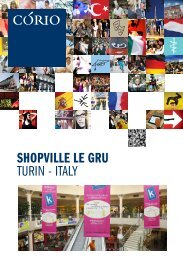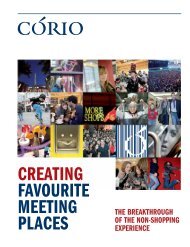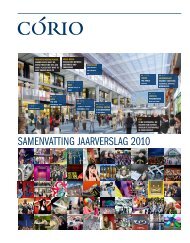Create successful ePaper yourself
Turn your PDF publications into a flip-book with our unique Google optimized e-Paper software.
48<br />
NAAR INHOUD/TO CONTENT<br />
Re-imagine the future<br />
of shopping<br />
Over the <strong>com</strong>ing years the world of shopping will<br />
undergo a sweeping transformation, as will the<br />
relationship between brands and the consumer. These<br />
changes will be driven by the internet, social networking<br />
and the demand for richer, more immersive experiences.<br />
Far from the internet killing shops, it will liberate them.<br />
The physical store will remain as important as ever<br />
providing an environment to meet the demands of a<br />
new type of consumer.<br />
Customers are exercising the power to choose<br />
like never before.They expect customized, personal<br />
experiences that they can share and critique with their<br />
social network both on and off-line.<br />
With increasing urbanization, smaller dwellings and<br />
the growing awareness for sustainability, people will<br />
own less things. There will be a growth in temporary<br />
ownership and the hiring of more goods. ‘Rent the<br />
Runway’ and ‘Bag, Borrow or Steel’ are two examples<br />
of fashion brands that hire their wares. To meet this<br />
Opinie<br />
new demand, brands will have to develop temporary<br />
ownership strategies. To quote Mark Zuckerberg of<br />
Facebook: ‘Anything that can be shared will be shared.’<br />
Futurist Marian Salzman said, “As we increasingly<br />
live wired, digital lives, we crave for <strong>com</strong>pensatory human<br />
contact and intimate experiences.” This is reinforced by<br />
advertising executive Kevin Roberts’ <strong>com</strong>ment that<br />
‘stores will host the next creative revolution as they be<strong>com</strong>e<br />
“theatres of dreams”.<br />
To be a brand that delivers high value recreational<br />
shopping, there needs to be a shift in the customer<br />
relationship from transaction to interaction and then<br />
ultimately to intimacy. Retailers must deliver beyond<br />
mere performance. Intimacy is remembered long<br />
after performance and benefits are a distant memory.<br />
Marketing <strong>com</strong>munication must shift to marketing<br />
connection from a brand-driven monologue to a dialogue<br />
between brand and customer and between customers<br />
themselves, both on and off-line.<br />
Brands will develop their own specific social, mobile,<br />
digital platforms that are ‘gamified’ allowing access to<br />
the people behind the brand, the sales assistant, farmers,<br />
pickers and growers. It is no longer just about localism<br />
but also about transparency and traceability. Bringing<br />
‘back of house’ to ‘front of house’<br />
There will also be a shift from MERCHANDISE to<br />
MEMENTOS, where merchandise will be bought on-line<br />
and mementos in shops as a memory of the experience.<br />
As designer and brand philosopher Marc Gobé<br />
said: ‘In the stores of tomorrow, buying will be outmoded<br />
as a sterile activity, and in its place will stand “the art of<br />
shopping”, which is less about purchasing and more<br />
about experiencing a brand’.<br />
As technology be<strong>com</strong>es an all-pervading part of<br />
the new consumer’s existence and disappears into<br />
the background, what will occupy the foreground?<br />
Well, we can see a steady growth in the demand for<br />
intimate, event driven, transitory shopping experiences,



